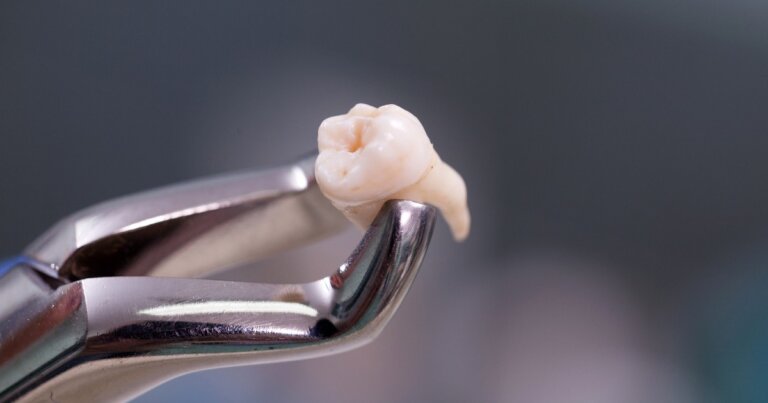Wisdom Tooth Removal Post-Operative Instructions

What You Should Do After Your Wisdom Tooth Extraction Surgery
Wisdom tooth extraction is a surgical procedure to remove one or more wisdom teeth — the four permanent adult teeth located at the back corners of your mouth on the top and bottom. It is important to follow these instructions to ensure an uneventful healing period.
If you have not had your wisdom tooth extraction appointment yet, please read our pre-visit instructions.
Bleeding Issues
- If you are biting on gauze, keep pressure onto the surgical area to stop bleeding and to encourage a blood clot to form. You can discard the gauze after 30 minutes.
- Slight bleeding can be expected for the first and second day following surgery. If you see a small amount of blood in your saliva (your saliva is slightly pink in color), do not worry. You can swallow your saliva; you will not get sick.
- If bleeding becomes heavy, take 1-2 pieces of extra gauze, fold it into a little square, wet it with water and bite down for 30 minutes; this should stop the bleeding. It is important to keep the gauze wet. Dry gauze can drag out the blood clot and make it bleed more.
- If bleeding in the wisdom tooth area does not stop after a few days, or continues to be heavy, give us a call. If you cannot reach us, visit your local hospital emergency room.
Sutures
- If the dentist placed dissolvable sutures, they will fall apart on their own after 1-2 weeks; no further action is required. If the sutures are non-dissolving, you will have to return to have them removed.
Avoid irritating the healing area
- Avoid forceful movements in the mouth, such as spitting, sucking through a straw, or vigorous rinsing, for the next few days.
- If you have to expel fluids from your mouth, allow liquids to drool out over a sink.
- The goal is to keep the blood clot in the wisdom tooth socket for healing. Dry socket is a painful condition where the blood clot in the socket is lost. Dry socket is very painful and will take longer to heal.
Pain Control
- It is normal to feel pain immediately after wisdom tooth removal.
- You are also welcome to use over the counter pain relievers such as ibuprofen (Advil) or acetaminophen (Tylenol). Ask your dentist what dosage is right for you, but if you do not have a pre-existing medical condition of allergies, 1000mg acetaminophen (Tylenol) with 600mg ibuprofen (Advil) every 4-6 hours or as needed is a very powerful combination.
Numbness
- Any numbness you’re experiencing from the local anesthetic will last approximately two to three hours. Until the anesthetic wears off, be careful not to drink hot liquids or bite your lip, cheek or tongue.
Difficult Jaw Opening
- Local anesthetic injections by their very nature cause injury to the muscles of the jaw, and can result in temporary difficulty opening your jaws wide, pain, and muscle spasm of the affected side. This is a condition called “myogenic trismus secondary to dental local anesthetic injection“. Follow this link to learn more about how to manage myogenic trismus at home.
Swelling
- Swelling may occur over the course of 48 hours after the extraction. To minimize swelling, place an ice bag or bag of frozen peas (wrapped in a towel) over the cheek, on and off for a few minutes at a time.
Antibiotics
- If your dentist prescribed antibiotics for you, take them as prescribed until finished. If you start feeling worse after the third day following surgery, or if you start having a difficult time swallowing or breathing, contact your dentist or seek help at your local hospital emergency room.
Keeping the Area Clean
- For the next 24 hours, no brushing, flossing, or rinsing your mouth
- After 24 hours, you may start rinsing the healing socket with warm salt water using the plastic syringe provided by your dentist (no more than once per day). You may also start brushing and flossing your other teeth like normal, except no toothpaste.
- After 48 hours, you can re-introduce toothpaste. We do not want toothpaste particles getting trapped in the healing socket.
Avoid Smoking and Alcohol
- Smoking tobacco products and drinking alcohol will prevent healing and increase the chances of infection or dry socket. Avoid it for at least 2 weeks.
Avoid Vigorous Exercise
- Too much physical activity may cause you pain and cause the wisdom tooth extraction socket to bleed. Normal activity can resume after a few days. If the healing socket starts to spontaneously bleed from exercise, this is a sign to lower the intensity.
Food
- Avoid eating on the area of the wisdom tooth removal surgery.
- Soft diet, e.g. scrambled eggs, mashed potatoes, smoothies, yoghurt, soft rice, porridge.
- Nothing too hot or cold for the first 48 hours.
- Drink lots of water to stay hydrated.
- Avoid spicy and acidic foods that can irritate the healing socket.
- Avoid small nuts and seeds that can get trapped in the healing socket.
Have Questions?
- If you have any additional questions or concerns about wisdom tooth surgery recovery, please contact us.

